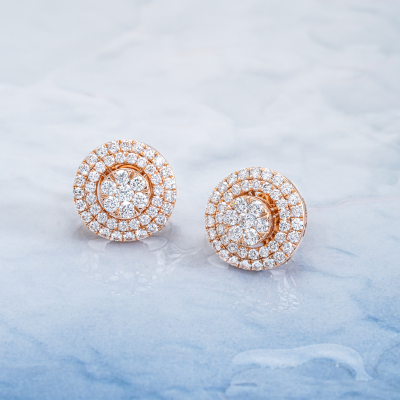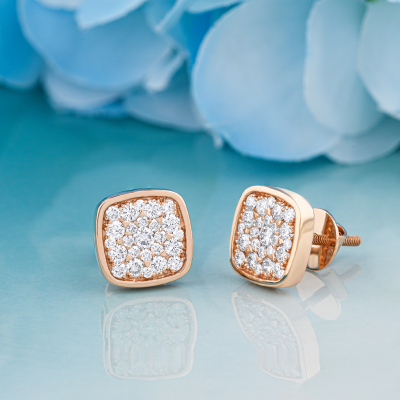Real vs Fake Amethyst – How To Know The Difference
As we all know, Amethyst is one of the most popular healing crystals loved by every gemologist. If you want to figure out the difference between real vs fake Amethyst, you should know that a real amethyst has various shades of purple. It will include many shades of white and blue in addition to purple. It will not contain any bubbles but will have impurities and threads beneath the surface.
The Amethyst is seen in various shades of purple – from softest lavender to heady grape. Its origin can be traced back to 25,000 BC, and since then, it has been celebrated by the Egyptians to Ancient Greeks. The name ‘Amethyst’ is often linked to the fables of Dionysus and is taken from the Greek for not being intoxicated.
Known for being the natural birthstone for February, it has crown chakra cleansing vibes and helps to bring mindfulness, balance, deep contemplation, and serenity.
A Complete Guide To Real vs Fake Amethyst
Being one of the most popular gemstones, our complete healing guide will help you know how to tell if an amethyst crystal is real or not.
#1. Color
One of the best methods to know between real vs fake Amethyst is to look at its color. A real amethyst will not have one block color but will rather have color zoning. The normal color of this gemstone is purple or violet.
Some stones appear so dark that they have a wine-shaded black or red, while some appear pale as lavender or shades of white and blue.
You should know that different varieties of Amethyst are available, which can affect its coloring too. For instance, Citrine and Amethyst are married to create Ametrine, which has sharp banding. Amethyst Quartz also appears to have translucent and milky shading around the crystal’s bottom. You may notice all the different shades rising and glinting under the faceted surface of the quartz crystal when you hold it up to the light. This is the perfect sign of a real amethyst.
#2. Clarity
Minerals and gems are formed in intense environments with extreme heat and pressure. Thus, it is obvious that this intense environment will affect the stone’s clarity. It leads to discoloration and bubbles beneath the surface. This situation is true for various stones but not for an Amethyst.
In the identification between real vs fake Amethyst, a real amethyst will not have bubbles but rather threads beneath the surface as it is a quartz stone. It is quite rare to see discoloration and bubbles in quartz.
You can use a magnifying glass and see what sits beneath the surface of your stone. If you can see bubbles, then it will not be quartz. And if it is not quartz, it is a fake amethyst. Genuine amethysts should be eye clear – it, however, does not mean that they should be crystal clear.
When you hold your stone to the light, you should glance right through it without any obstruction.
#3. Hardness
The hardness test is always great for any crystal, including an amethyst. On the Mohs hardness scale, each crystal has its own score. So knowing where your amethyst crystal sits on the scale will help you know if your stone is real or not.
On the Mohs scale in the range of 1 to 10, 1 is the softest, and 10 is the hardest. So, what is the score of an amethyst? It is 7, which means it is a pretty hard crystal. So, a true Amethyst stone shouldn’t be damaged by anything below a 7 on the Mohs hardness scale.
#4. Availability of various cuts
After carefully observing the crystal’s clarity and color, it is time to observe the stone’s cut. Amethyst is available in many different shapes and is quite easy to cut. So, seeing this particular stone carved into a heart shape does not mean it is fake.
Another popular cut for a true Amethyst is a round shape, as jewelers usually carve this shape to hide any imperfections in the original stone. So if you are trying to study between real vs fake Amethyst, do not feel shy to ask for magnifying glass to check for the clarity and the distribution of color in the gem.
#5. Clarity grades
Just like diamonds, an amethyst has three clarity grades for you to figure out how perfect your stone is.
Natural AA
This grade applies to 50-75% of the gems out there as it is the highest range in the amethysts. The stones in this category usually have heavy or moderate inclusions with a light purple color scale.
Natural AAA
The natural AAA applies to 20-30% of amethysts. Slight inclusions are visible in this grade of stone and appear in medium purple color. You will usually find these crystal grades in independent jewelers and higher-scale families.
Natural AAAA
The natural AAAA is the top grade of the Amethyst stone. It is believed that this type of Amethyst makes up about 10% of the market and is as close to being perfect as it can be. They appear clear to the naked eye and have a shade of dreamy dark purple.
We have compiled a list of tips for you to identify between real vs fake Amethyst easily. Still curious to know more about this stone? Before buying gemstones just read our latest blog on 5 Best Gemstones For Engagement Rings.










